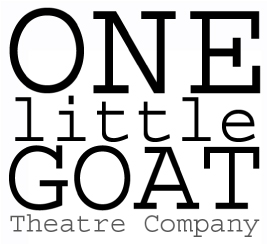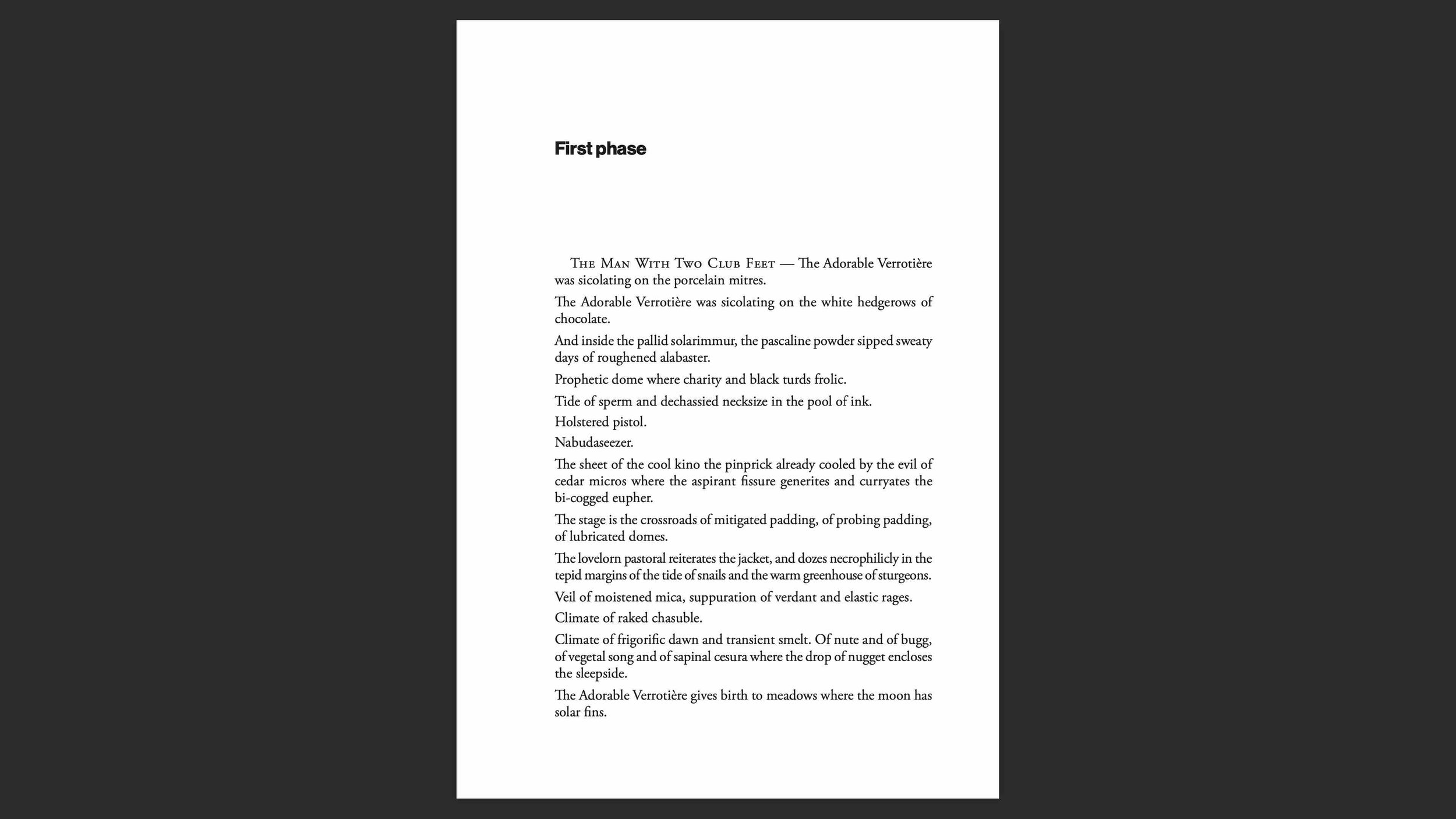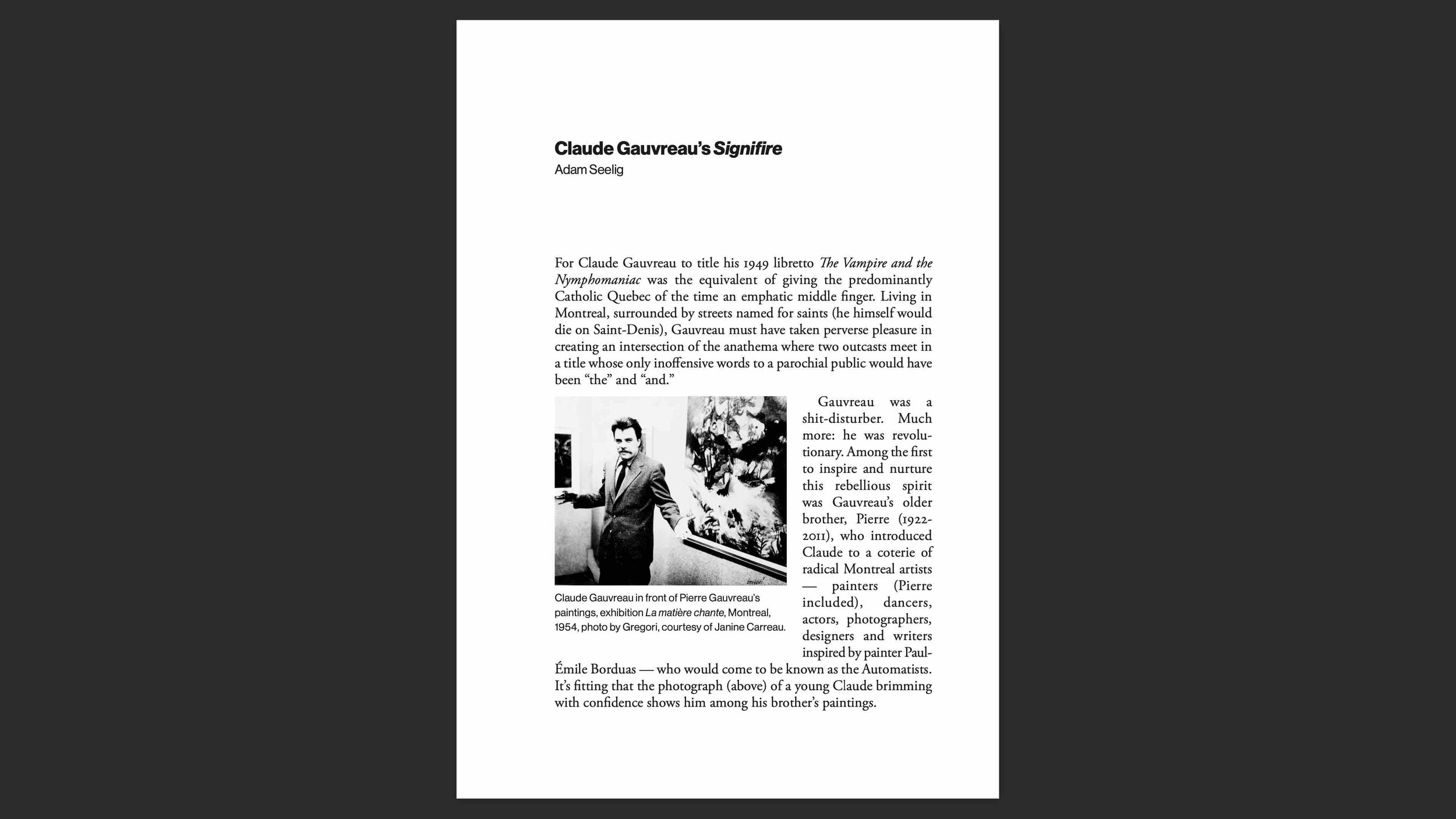Le vampire et la nymphomane
The Vampire and the Nymphomaniac
bilingual publication — publication bilingue
REVIEWS & INTERVIEWS
Read the excellent review by David Olds of The Vampire and the Nymphomaniac in WholeNote Magazine.
Listen to radio host donna g’s thoughtful interviews of translator Ray Ellenwood (20 Nov 2022) and editor Adam Seelig (13 Nov 2022) for The More the Merrier on CIUT 89.5 FM.
Revered in Quebec as a visionary poet-playwright, an original contributor to the 1948 Refus Global manifesto by Montreal's Automatist movement, Claude Gauvreau (1925-1971) is an artistic force. His innovative “explorean” language continues to inspire and provoke artists and audiences of every kind.
Claude Gauvreau (1925-71)
With brother Pierre Gauvreau’s paintings, exhibition La matière chante, Montréal, 1954, photo by Gregori, courtesy of Janine Carreau.
Poète et dramaturge visionnaire, collaborateur du manifeste automatiste Refus Global de 1948, Claude Gauvreau (1925-1971) est une force artistique. Son utilisation novatrice du langage «exploréen», continue d'inspirer et de provoquer des artistes et des publics de toutes sortes.
The Vampire and the Nymphomaniac, Gauvreau’s sole libretto, is a phantasmagoric love story of star-crossed lovers kept apart by the repressive forces of conventional society. Written in 1949 in Gauvreau’s inimitable, outrageous style, it premiered posthumously in Montreal in 1996.
Le vampire et la nymphomane, unique livret d’opéra de Gauvreau, est une histoire d’amour fantasmagorique entre des amants maudits, séparés par les forces répressives d’une société conformiste. Écrite en 1949 dans le style inimitable de l’auteur, l’œuvre a été créée à titre posthume en 1996, à Montréal.
Book Preview
This special tête-bêche (flip book) publication — augmented by production photos as well as essays by the translator and editors — marks the first stand-alone edition of The Vampire and the Nymphomaniac in either French or English, the first English translation of the libretto and the first bilingual edition of a work by Gauvreau.
“It's as if we were hearing the language of gods and goddesses long forgotten on some island inhabited by strange animals. If we listen attentively to the text, we suddenly find ourselves dreaming of carnivalesque poetic flights with the Adorable Verrotière, the very sprite of love, sublimating the amorous Vampire's gush from between her thighs.”
— Lorraine Pintal, Théâtre du Nouveau Monde
Cette publication en format tête-bêche — augmentée de photos de la production et d’essais du traducteur et des éditeurs — constitue la première édition autonome de Vampire et la nymphomane, sa toute première traduction en anglais et la première édition bilingue d’un texte de Gauvreau.
“On croirait entendre la langue des dieux et des déesses oublié.es sur une île habitée par des animaux étranges. Si on écoute attentivement le texte, on se surprend à rêver à des envolées carnavalesques avec cette fée de l’amour qu’est la verrotière et à sublimer le jaillissement du vampire amoureux d’entre ses cuisses.”
— Lorraine Pintal, Théâtre du Nouveau Monde
Le vampire et la nymphomane / The Vampire and the Nymphomaniac
Translated by Ray Ellenwood, translator of Refus Global and winner of the Governor General Award in translation (then called the Canada Council Translation Prize). Edited by Thierry Bissonnette, Ray Ellenwood and Adam Seelig. Published by One Little Goat Theatre Co, in association with Nouvelles Éditions de Feu-Antonin. $24.95. 168 pages. ISBN 978-1-7753255-6-7 (print/imprimé).
Order online / Acheter en ligne:
>> Canadian Play Outlet
>> Les Libraires (URL à venir)
In person / En personne (14 Nov…):
>> TYPE Books in Toronto
>> Librairie Le Port de tête à Montreal
One Little Goat gratefully acknowledges the support of the Canada Council for the Arts and the Bureau du Québec à Toronto. Special thanks to Janine Carreau and Friends of One Little Goat Theatre Company.
Le vampire et la nymphomane a reçu le généreux soutien du Conseil des Arts du Canada et du Bureau du Québec à Toronto. Nous remercions tout particulièrement Janine Carreau et les Amis de One Little Goat Theatre Company.
Claude Gauvreau, Jappements à la lune, read by / lut par Steve McCaffery (Toronto, Nov 2022)
MORE PUBLICATIONS
PLAY: A (MINI) HISTORY OF THEATRE FOR KIDS
PLAY: A (Mini) History of Theatre for Kids, Adam Seelig. One Little Goat, 2019. 96 pages (script & sheet music), ISBN-9781775325529.
"Who made the first plays in the world? Children!" Playing is what kids do best.
Beginning with classic games like tag, PLAY is an exciting, playful introduction to some of the world’s most enduring games we call “plays.”
MUSIC MUSIC LIFE DEATH MUSIC: AN ABSURDICAL
Music Music Life Death Music, Adam Seelig. Toronto: One Little Goat, 2018. 128 pages (script & sheet music), ISBN-9781775325505.
An “absurdical” exploring the unexpected dynamics between three generations of family: a grandmother, her daughter, son-in-law and teenage grandson.
THE CHARGE OF THE EXPORMIDABLE MOOSE
The Charge of the Expormidable Moose, Claude Gauvreau, translated by Ray Ellenwood. Toronto: Exile, 1996.
Widely considered to be Claude Gauvreau's masterpiece, The Charge of the Expormidable Moose (La charge de l'orignal épormyable) revolves around a poet who is mocked and envied by his fellow housemates - or are they fellow inmates? Playful, provocative, powerful, this exceptional drama confirms Gauvreau's stature as "a giant" (Le Devoir).
UBU MAYOR: A HARMFUL BIT OF FUN
Ubu Mayor: A Harmful Bit of Fun, A Play With Music, Adam Seelig. Toronto: Book*hug, 2014.
Ubu Mayor is the result of intoxicatingly driving Alfred Jarry’s 1896 merde-filled masterpiece Ubu Roi head-first into the internationally renowned antics, absurdities and obscenities of Toronto’s mayor Rob Ford and his brother, Doug. Ubu Mayor tells the frolicsome tale of a mayor (Ubu) whose wife (Huhu) is having an affair with his older brother (Dudu). Ubu wants Huhu to love him again. Ubu wants what’s best for the city. But both his love and political ideals are foiled by Dudu’s machinations. Readers will enjoy the Fordish banter, presented in Seelig’s iconoclastic dramatic style, and enjoy dipping into the music for such ridiculously poignant tunes as “B-b-b-bacon,” “Etobicokaine,” and “Plenty to Eat at Home.”
TALKING MASKS: OEDIPUSSY
Talking Masks: Oedipussy, Adam Seelig. Toronto: Book*hug, 2009.
Talking Masks is a dramatic score whose themes collide, clash and harmonize. At its core are a son, two mothers and an absent father who, in exploring their intertwined fates, fuse two of the world’s most enduring myths: the tragedy of Oedipus and the tale of Isaac and Ishmael. What unfolds is a wild progression of rapid-fire interactions that reveal and expose as much as they conceal and mask about the ‘charactors’.
RITTER, DENE, VOSS
Ritter, Dene, Voss, Thomas Bernhard, translated by Jansen & Northcott, in Histrionics. London: Quartet, 1991.
Ritter, Dene, Voss involves the Worringer sisters — both Viennese actors — preparing for their brother’s return from the Steinhof sanitarium in Vienna, where he has been a patient for some time. Dene is the driving force behind an attempt at reintegrating him into family life while Ritter remains skeptical. When Voss, a tormented genius (loosely based on the great, idiosyncratic philosopher, Ludwig Wittgenstein), finally appears, it becomes clear that he never planned to stay for good. The play takes place before, during, and after lunch, unfolding through caustic dialogue in this ‘misanthropic comedy.’
















































